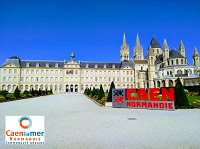Orateur
Description
The formation of nuclear clusters, which emerge as many-body correlations at sub-saturation densities in nuclear matter, is essential for constructing a reliable equation of state (EOS). Phenomenological models utilizing energy density functionals (EDFs) provide a convenient approach to account for these bound states of nucleons by introducing clusters as additional degrees of freedom (DOF). In a recent work, we extended these EDF-based models to incorporate recent experimental findings on the existence of nucleon-nucleon short-range correlations at supra-saturation densities by using effective clusters immersed in dense matter as surrogates [1].
In this talk, we propose a novel approach to include light cluster DOF and associated in-medium effects at sub-saturation densities within an upgraded time-dependent framework employing EDFs. Our work represents the first attempt, following a linearized Vlasov approach [2] or a hydrodynamical perspective [3], to describe the formation of intermediate mass frag ments and light clusters within a unified theoretical picture. This formation occurs during the dynamics of out-of-equilibrium processes characteristic of heavy-ion collisions.
The potential to use upgraded transport models to extract valuable information on the EOS, which is also of great interest for modeling astrophysical objects and gravitational wave signals, will be explored and discussed.
References
[1] S. Burrello, S. Typel, Eur. Phys. J. A 58, 120 (2022).
[2] R. Wang, S. Burrello, M. Colonna, arXiv:2405.02157v1 [nucl-th], accepted as Letter on PRC.
[3] S. Burrello, S. Typel, in preparation.

